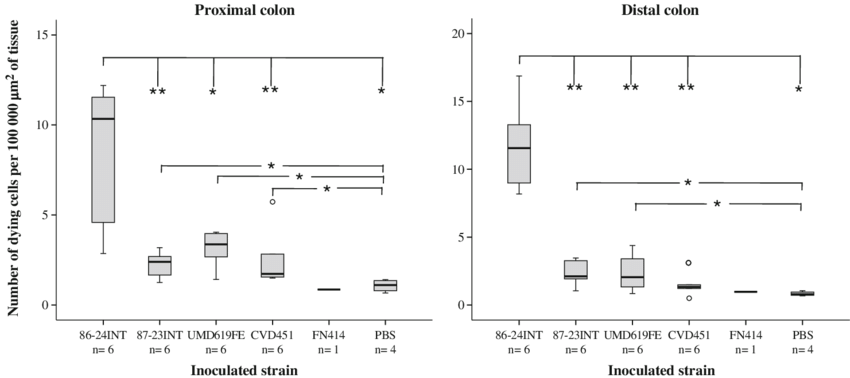Abstract and Figures
Enterohemorrhagic Escherichia coli (EHEC) infection leads to marked intestinal injury. Sigmoid colon obtained from two children during EHEC infection exhibited abundant TUNEL-positive cells. To define which bacterial virulence factors contribute to intestinal injury the presence of Shiga toxin-2 (Stx2), intimin and the type III secretion system were correlated with symptoms and intestinal damage. C3H/HeN mice were inoculated with Stx2-producing (86-24) and non-producing (87-23) E. coli O157:H7 strains and 86-24 mutants lacking eae, encoding intimin (strain UMD619) or escN regulating the expression of type III secretion effectors (strain CVD451).
Severe symptoms developed in mice inoculated with 86-24 and 87-23. Few mice inoculated with the mutant strains developed severe symptoms. Strain 86-24 exhibited higher fecal bacterial counts, followed by 87-23, whereas strains UMD619 and CVD451 showed minimal fecal counts. More TUNEL-positive cells were found in proximal and distal colons of mice inoculated with strain 86-24 compared with strains 87-23 and CVD451 (p ≤ 0.01) or UMD619 (p < 0.05, proximal colon, p < 0.01, distal colon). The results show that strains 86-24 and 87-23 exhibited better colonic persistence and more symptoms, presumably due to the presence of intimin and type III secretion effectors. Extensive intestinal mucosal cell death was related to the presence of Stx2.
